A deliciously chewy mushroom that's relatively new to mushroom cultivation, chestnut mushrooms are one of the few species of Pholiota that are safe to eat. If you're like me, once you taste their crunchy stems slurped up in a bowl of noodles you'll be hooked. In this post I'll go over their background, how to get your own, and the best ways to cook them.
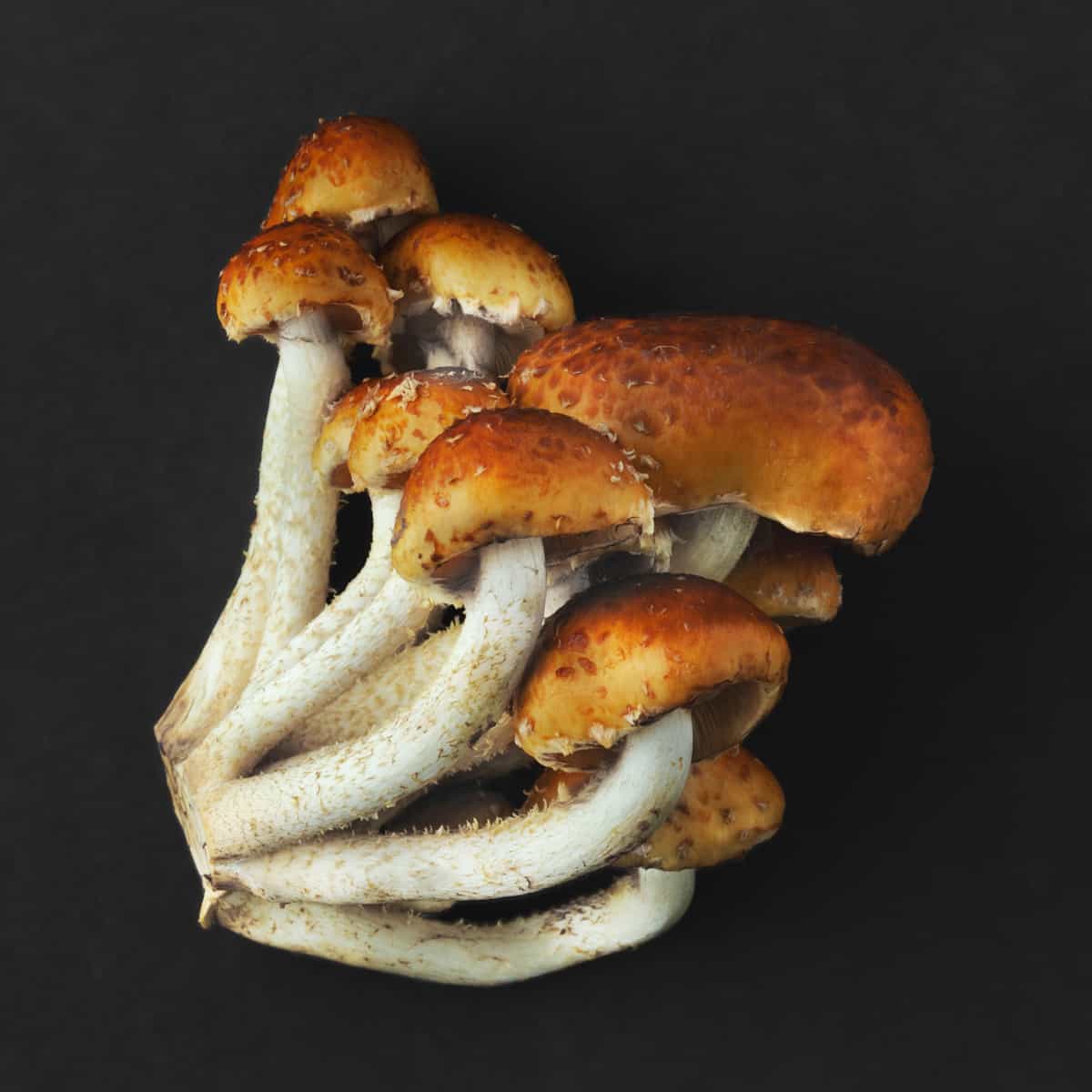
An Edible Pholiota
A cousin of the popular wine cap in the Strophariaceae, chestnut mushrooms (Pholiota adiposa) are Native to Europe and might also be called cinnamon cap mushrooms, although that gets confusing as the name can also be used to describe brick cap mushrooms (Hypholoma sublateritum).
These are a parasitic, hardwood-loving species found growing in clusters on living trees and decaying or rotting wood. In Europe they're commonly associated with beech trees.
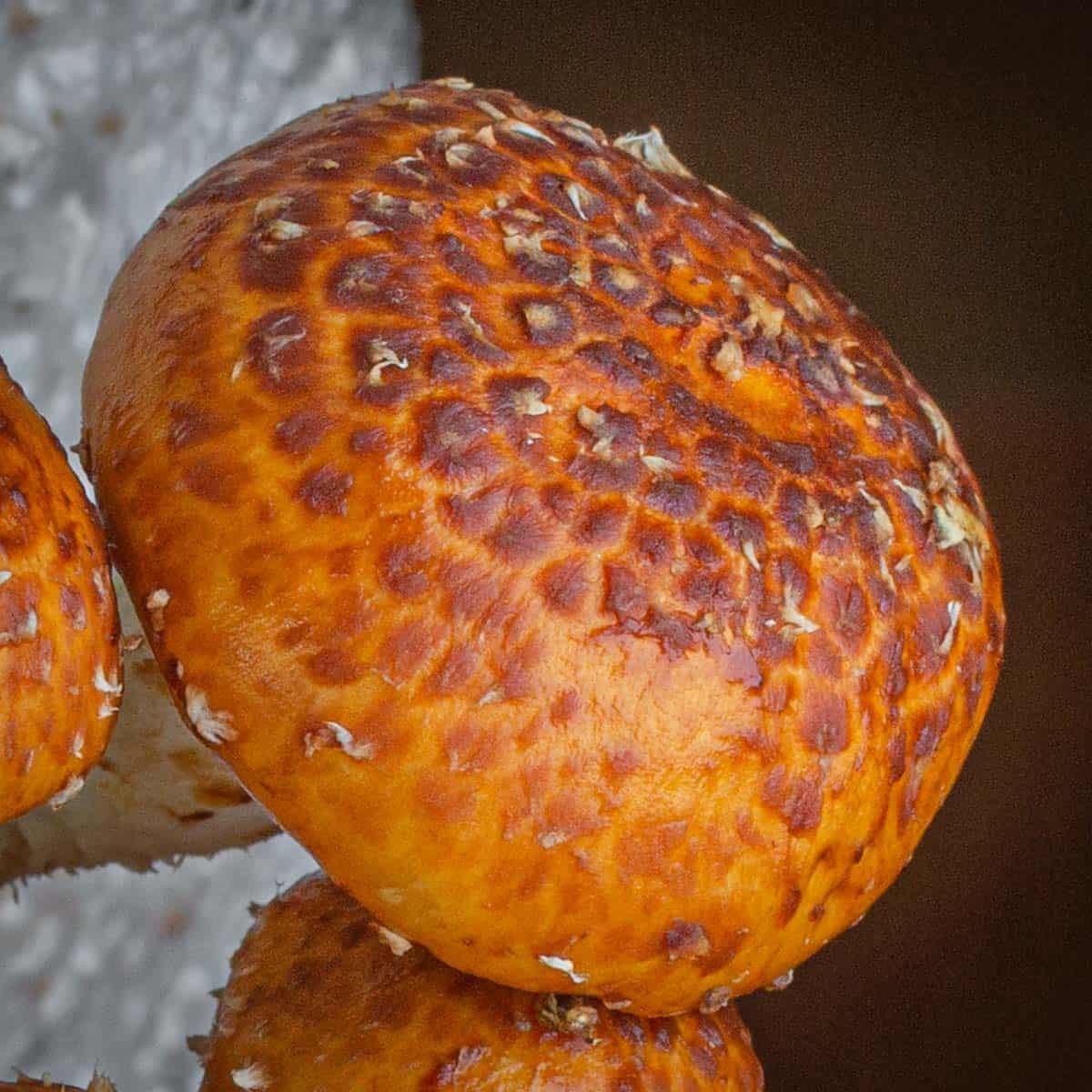
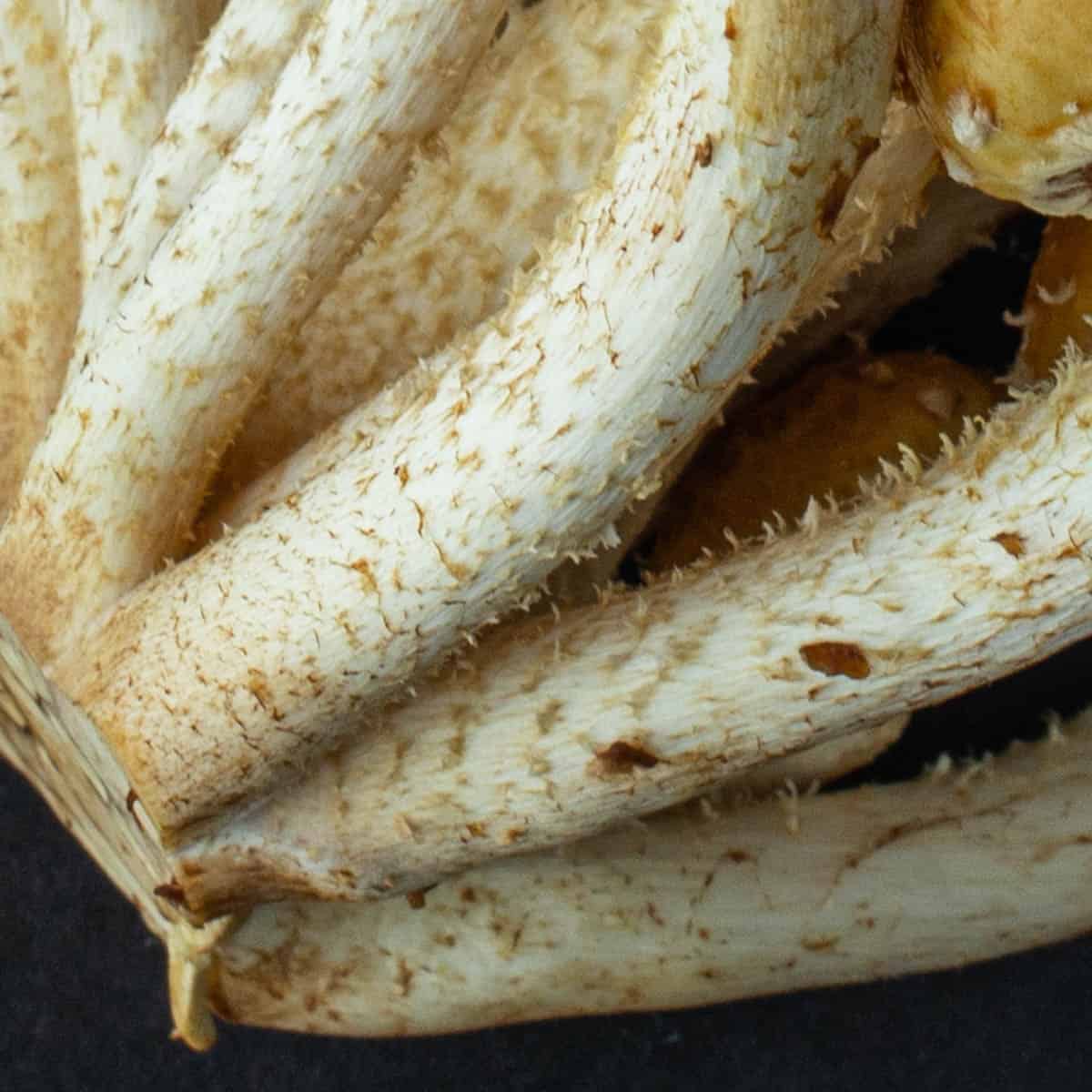

They're one of a few species of edible pholiota, also known as scaly cap mushrooms. Two characteristics that always help me identify mushrooms in the Pholiota genus are the triangular, pointed scales on the cap and stems, and how they grow in tufts or clusters of mushrooms. Like enoki, in the wild they may have a slippery or slimy cap when wet.
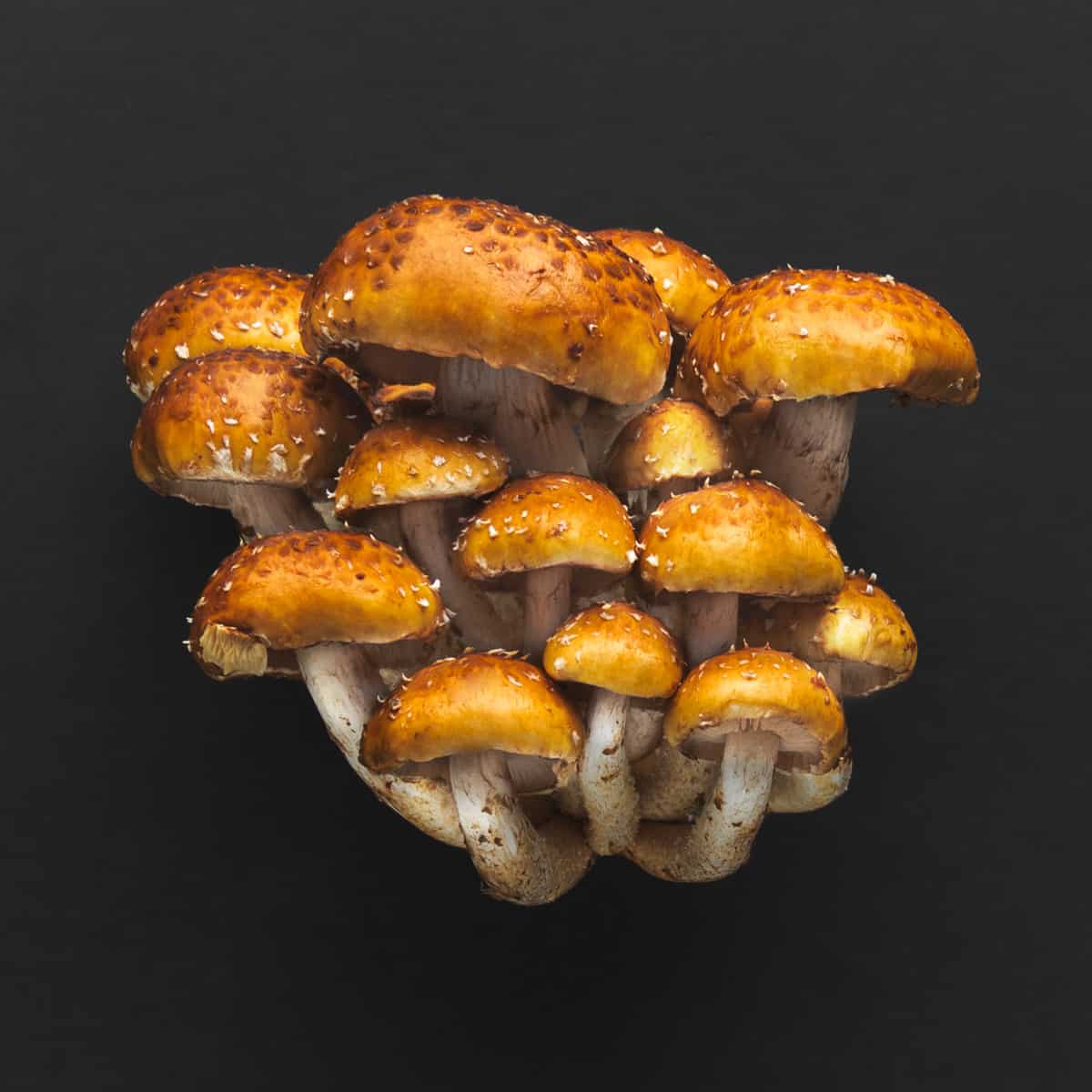
While some people claim to eat scaly caps like Pholiota squarrosa and Midwestern Squarossaroides, most wild pholiota are not recommended for the table and some cause reactions if eaten with alcohol.
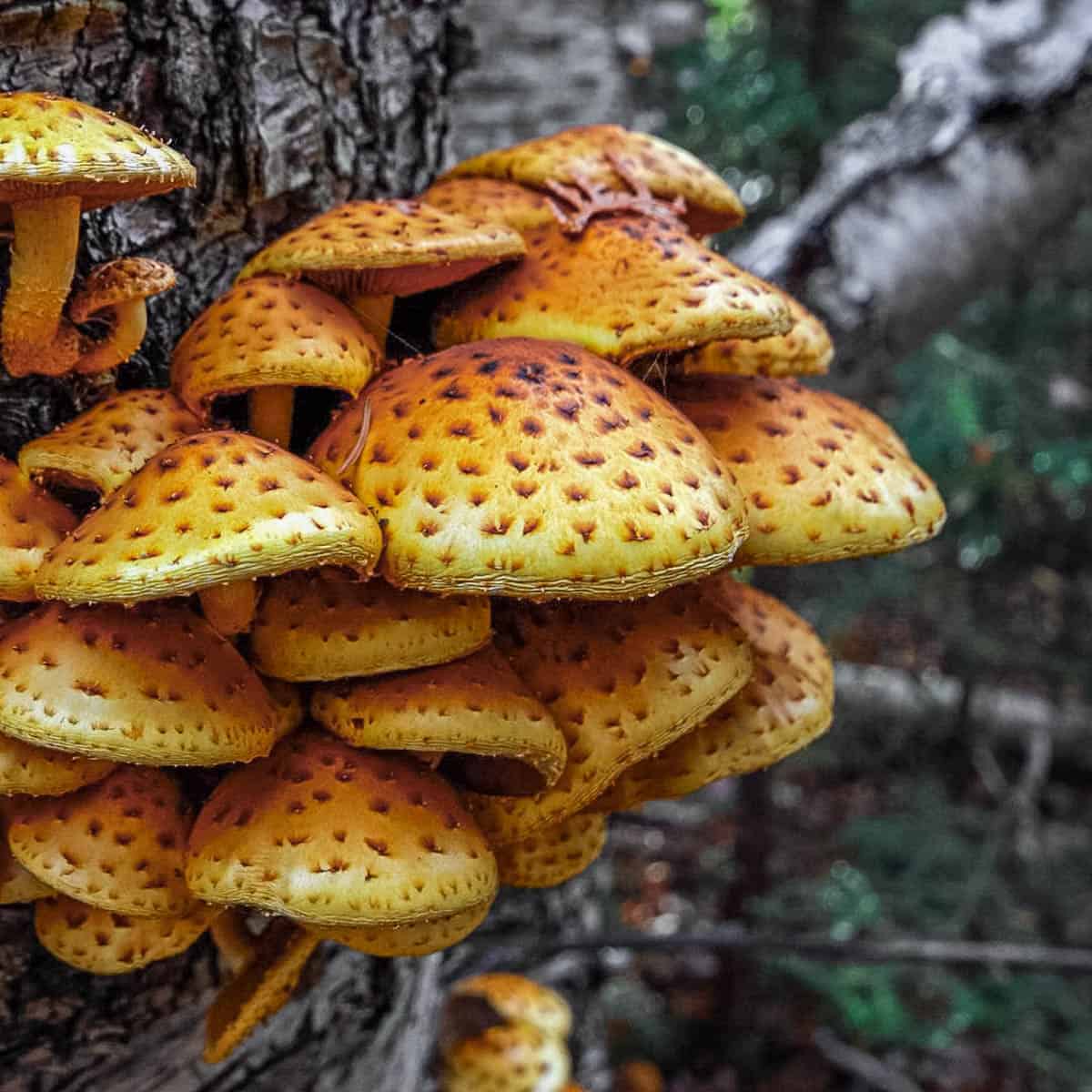
The Importance of Latin Names
Chestnut mushrooms are also the perfect example of why Latin names are important as there's many mushrooms that could go under the same common name. Brick caps, the common cremini, a small bolete, and plenty of others might be called chestnuts.
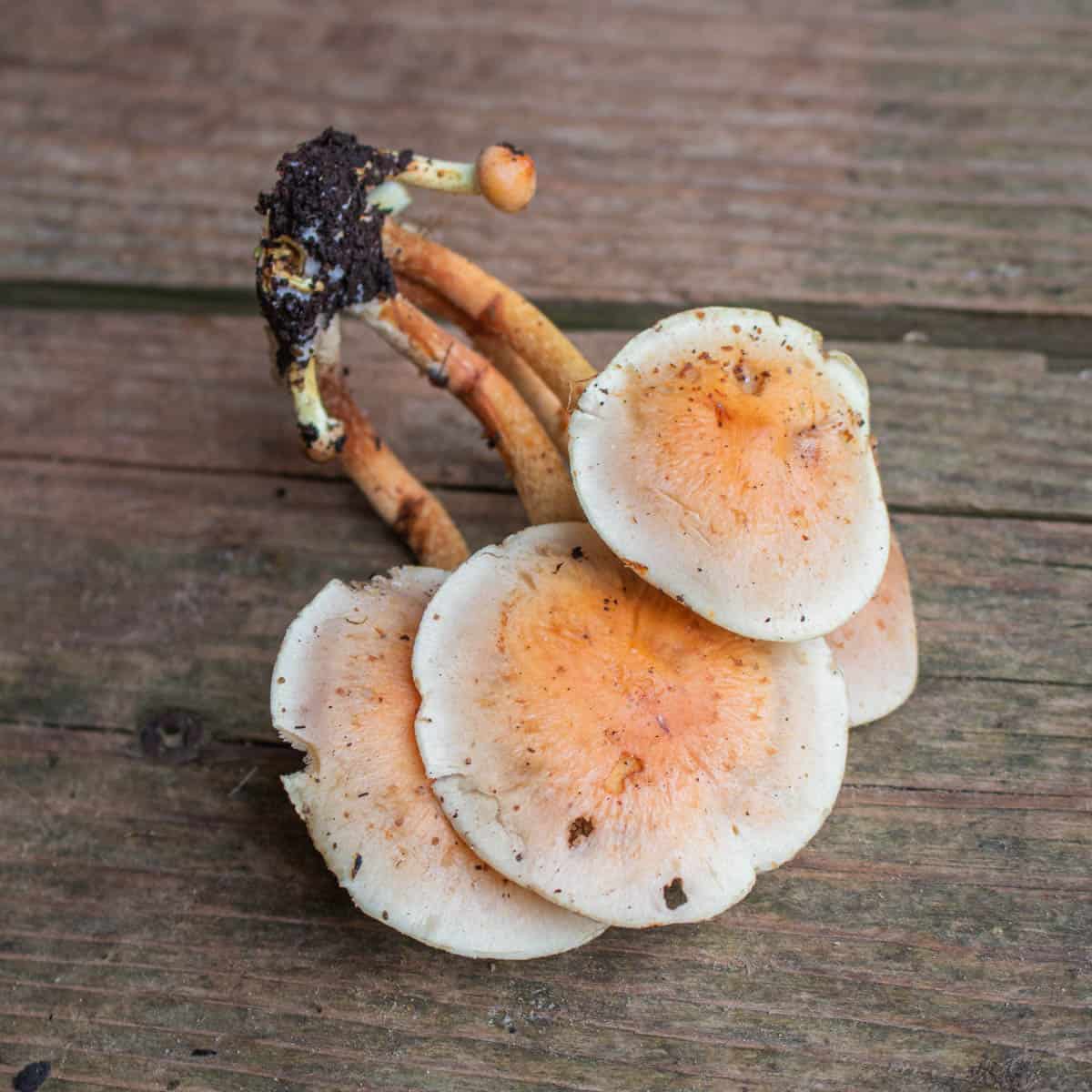
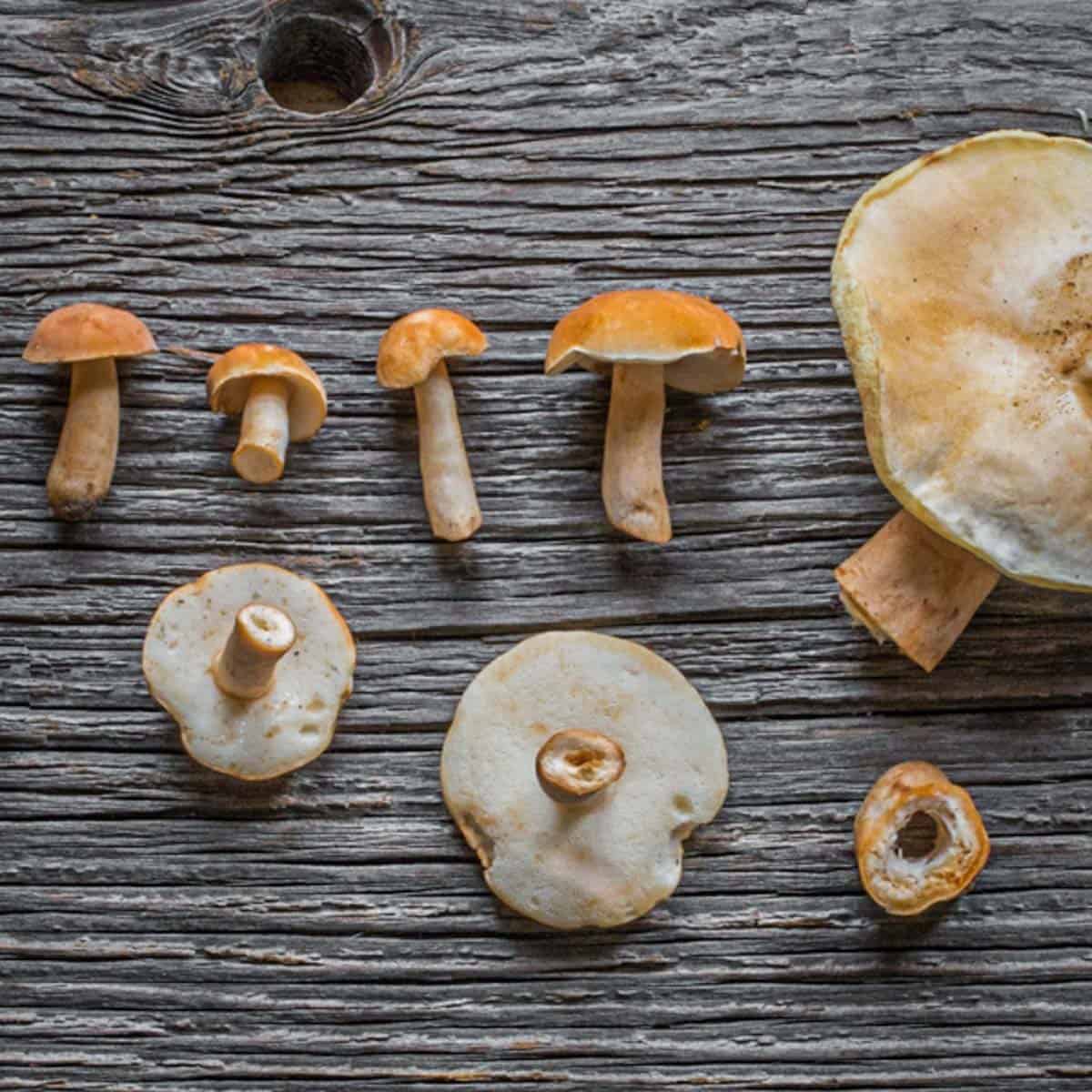
But, there's only one Pholiota adiposa. Another cousin, Pholiota aurivella, is edible, shares the chestnut common name, and can be cultivated.
Growing Chestnut Mushrooms
Chestnut mushrooms can be grown outdoors on inoculated hardwood logs. Mushroom suppliers like North Spore sell inoculated spawn bags and grow kits that will grow mushrooms on your counter. Grow kits make for an easy, edible project in the Winter.
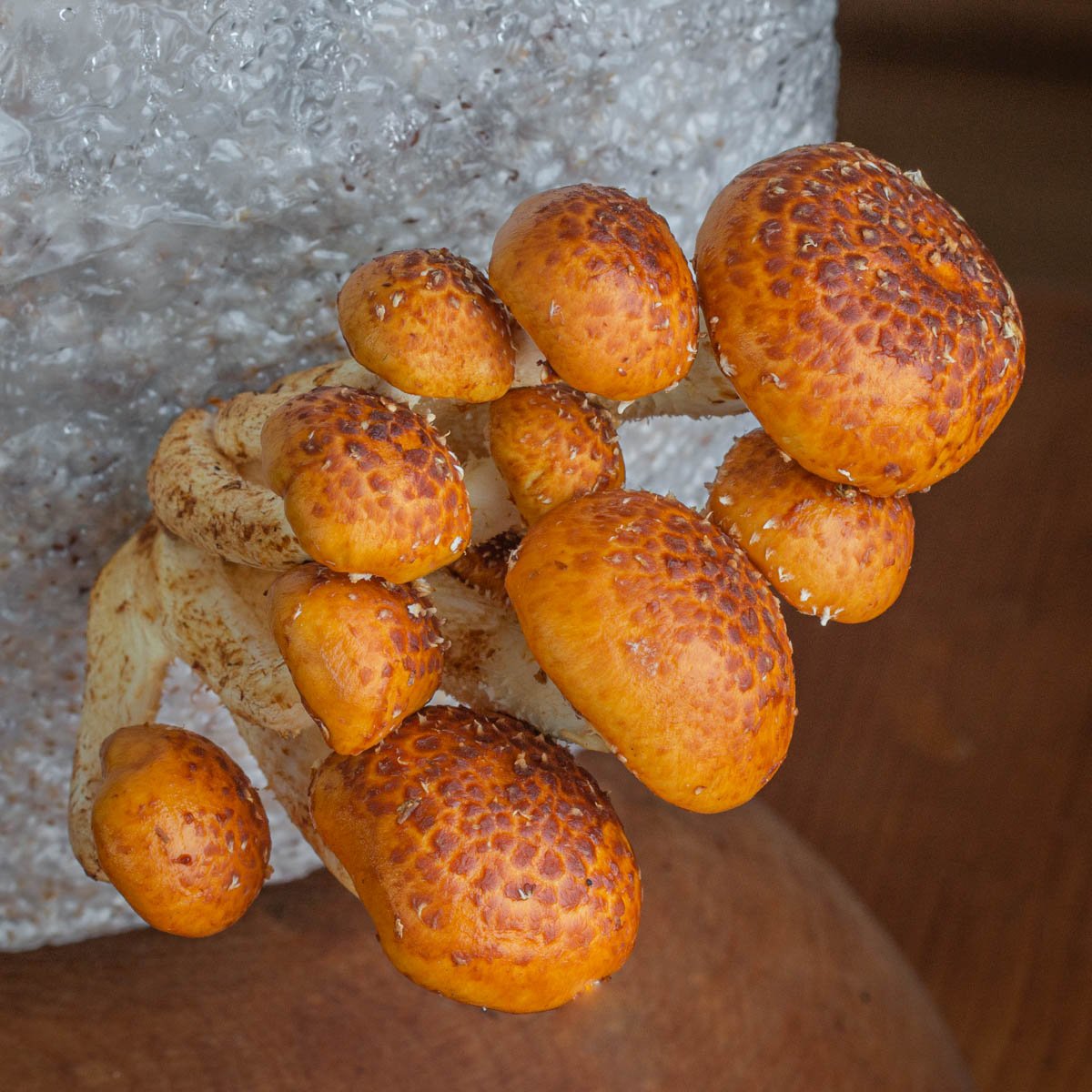
R and R cultivation in the Twin cities grows lots of these mushrooms and also sells grow kits and substrate bags at a reasonable price. Note the pronounced scales on the caps of the mushrooms I took in their fruiting room below.
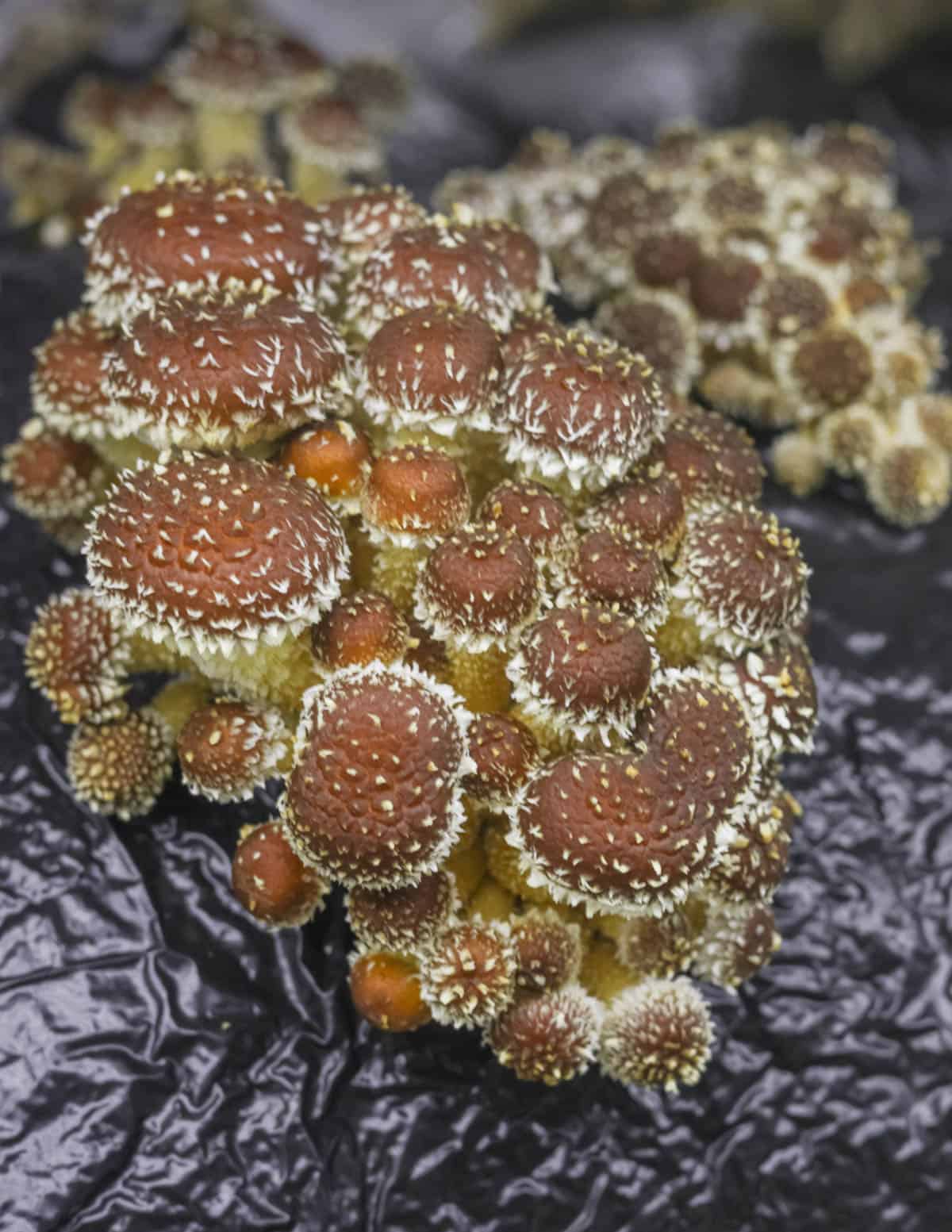
How to Cook Chestnut Mushrooms
While I assume there's a tradition of cooking wild ones, evidence of their use is scarce, at least in English. Japan and China seem to use them the most.
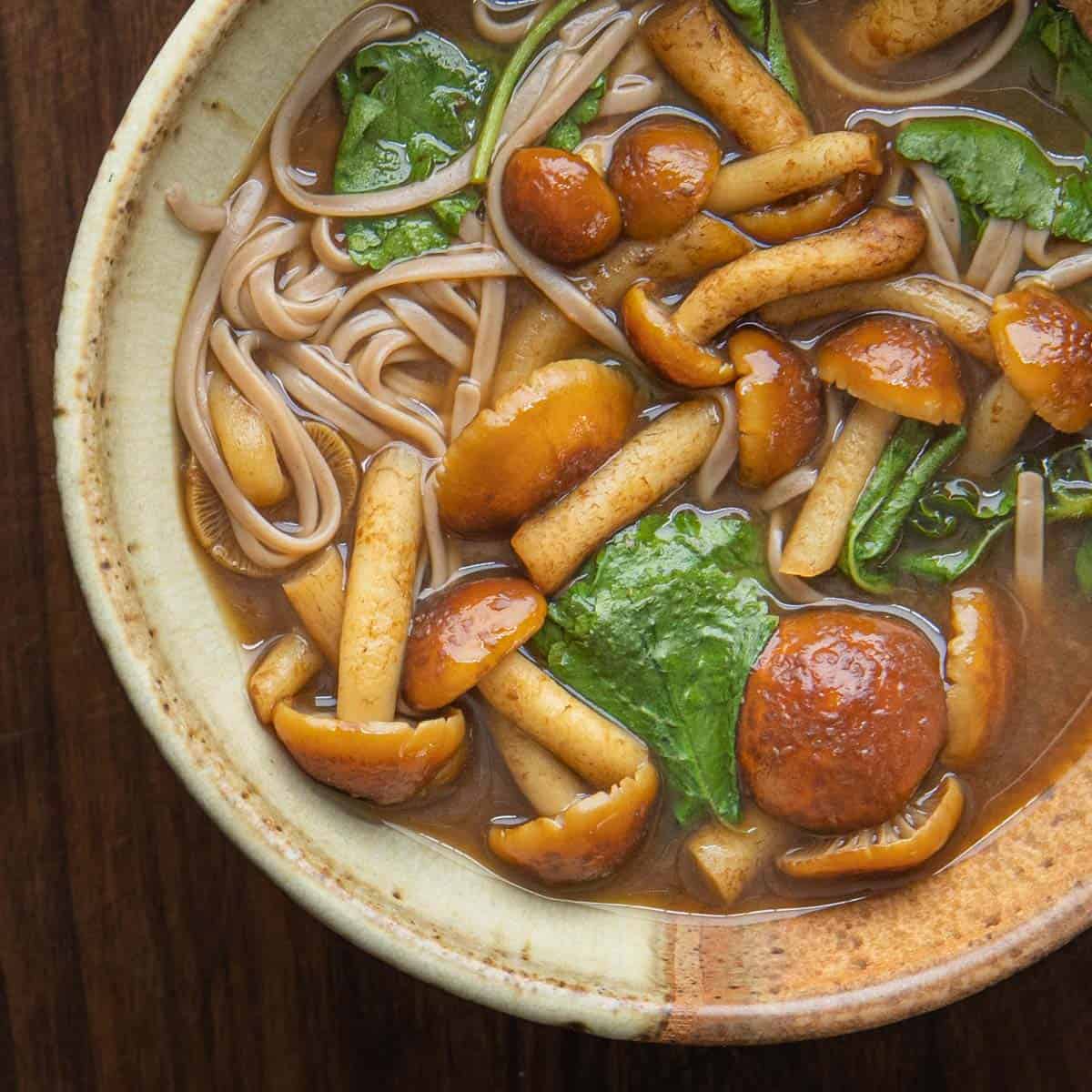
In Japan they're known as numerisugitake, and are cultivated along with their cousin nameko mushrooms (Pholiota nameko). Using Japanese cuisine as inspiration is a good way to start enjoying them, and I think they're best cooked without cheese or cream. You can also use them in Japanese recipes that call for hen of the woods.
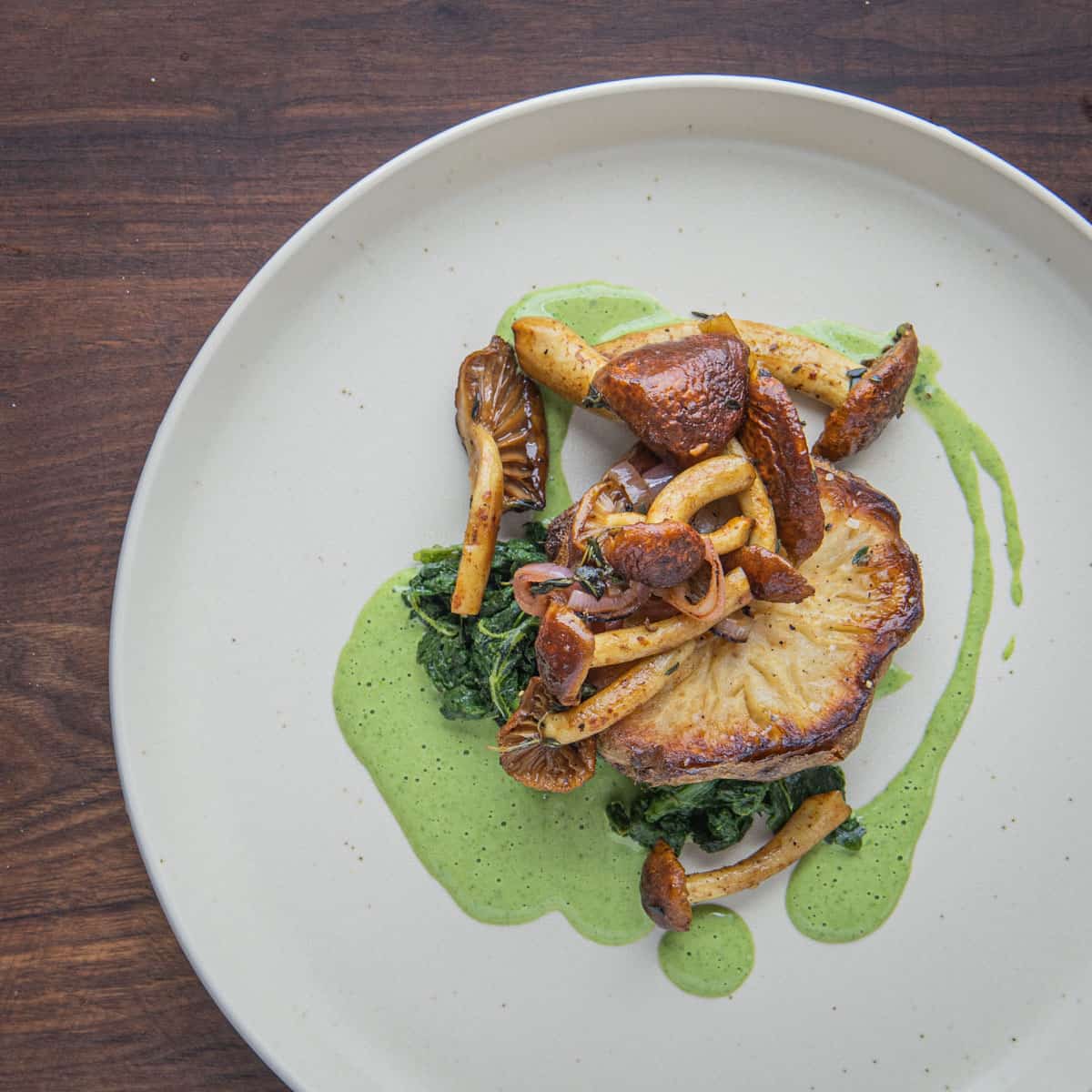

A versatile mushroom, they have a nutty flavor and slightly sweet taste. The best part is their chewy texture that stays crunchy after cooking. Depending on the size, they can be left whole if small, halved or quartered if large. Save small mushrooms for soup or pickling.
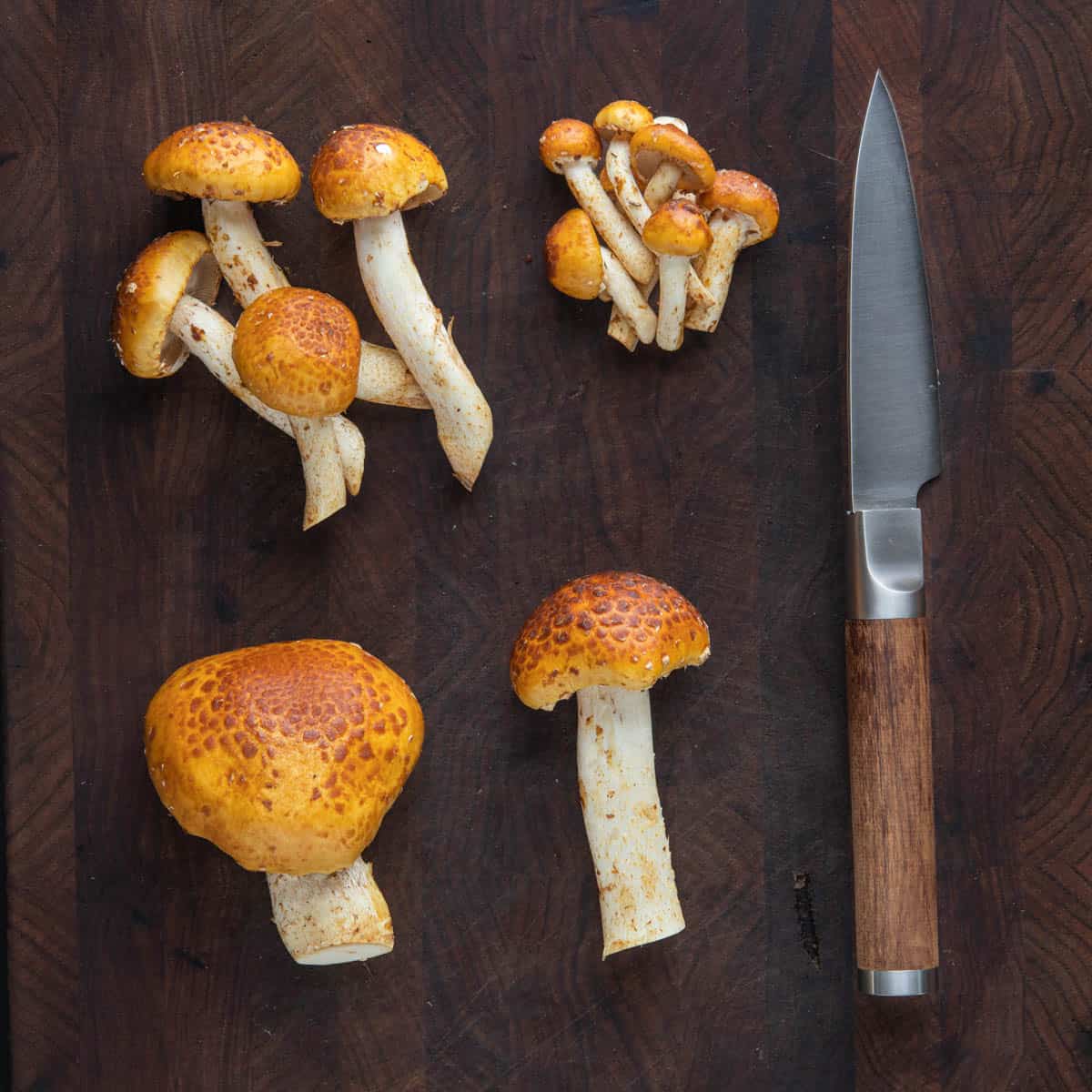
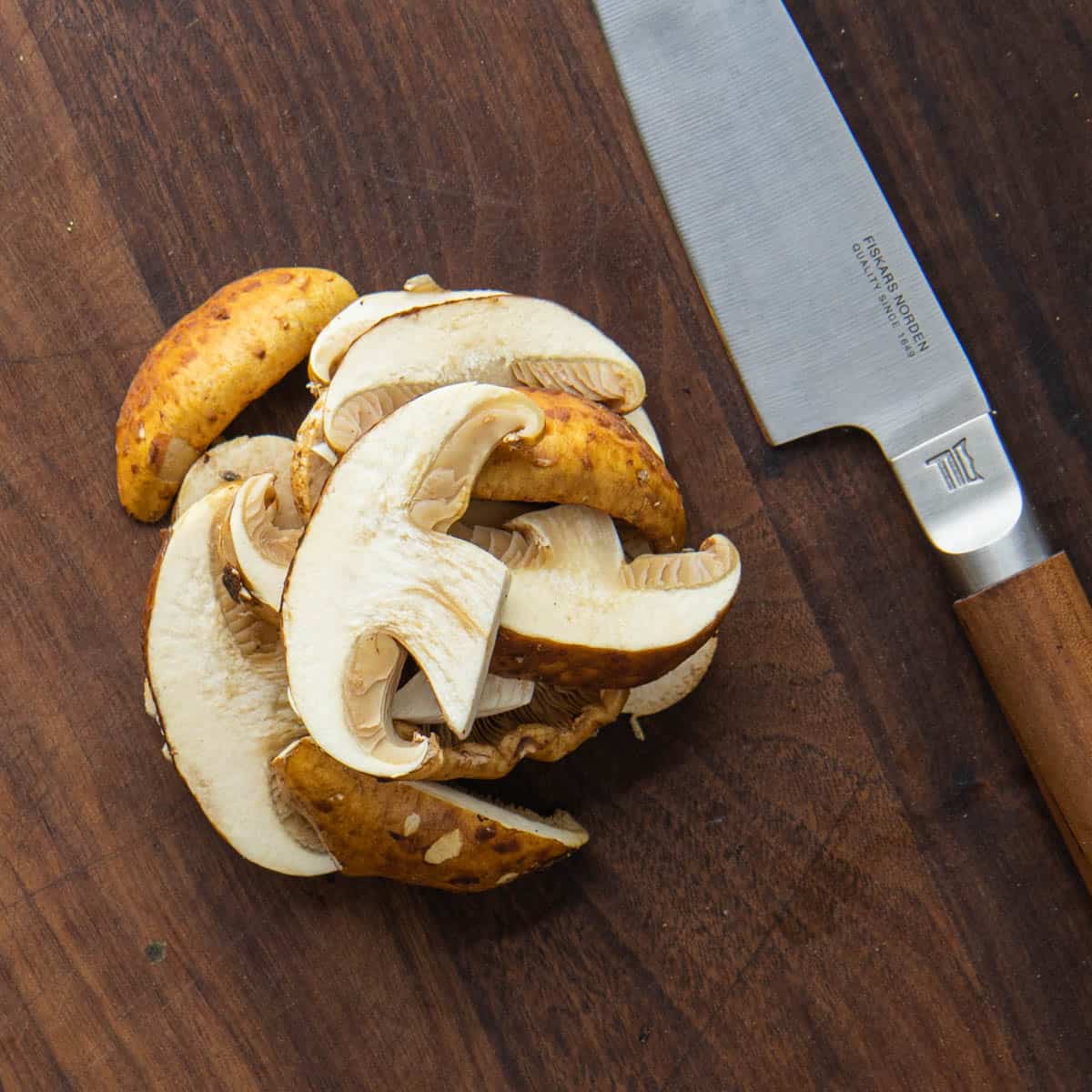
The Long, Edible Stem
These have a long, firm stem that's tender and good to eat. They're great roasted and served in a salad as in the recipe in this post, but take well to many preparations. My Oyster Mushroom Soup with Soba Noodles is a good option too.
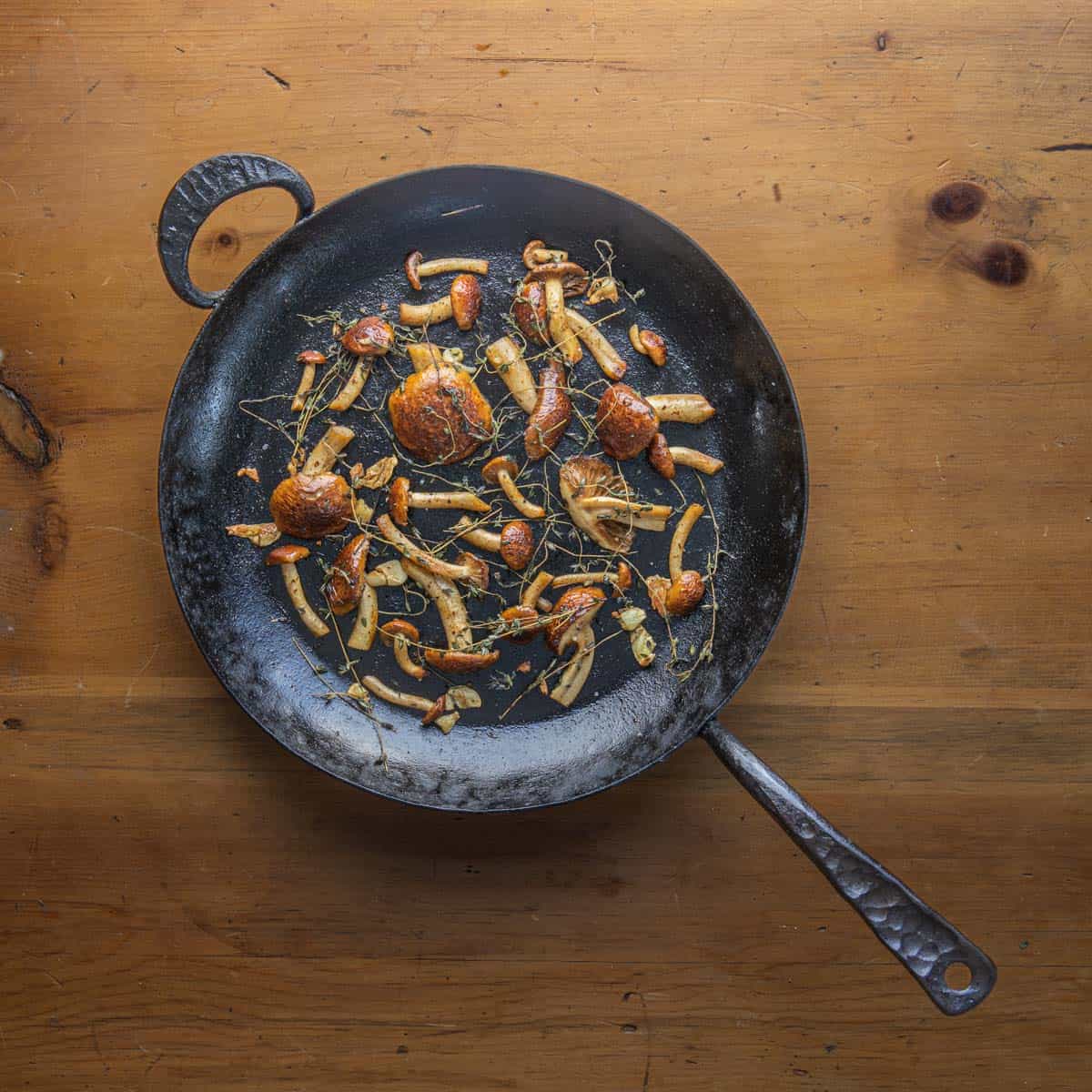
My favorite chestnut mushroom recipe so far is a simple salad of roasted mushrooms. If you have anything to add, especially on traditional uses of them in Japan or China, please comment.
Related Posts
Roasted Chestnut Mushroom Salad
Equipment
- 1 12 inch cast iron pan or baking sheet
- 1 small mixing bowl
Ingredients
- 8 oz chestnut mushrooms
- 2 tablespoons cooking oil
- 1 tablespoon extra virgin olive oil
- ½ teaspoon kosher salt plus more to taste
- Fresh ground black pepper
- A handful of fresh thyme sprigs
- 3 large cloves of garlic
- 1 Tablespoon balsamic vinegar
- 4 oz shallot cut into ¼ inch rounds
Instructions
Mushrooms
- Crush the garlic cloves and cut into ½ inch pieces.
- Trim the mushroom stems to an even length. Toss the mushrooms in a bowl with the oil, salt, garlic, thyme sprigs and pepper.
- Lay the mushrooms out on a cast iron pan or baking sheet lined with parchment and roast at 425 F for 20-25 minutes or until lightly brown. Rotate the pan 180 after 15 minutes.
Shallots
- Peel the shallot and slice ¼ inch thick. Heat the shallot slices in a dry cast iron skillet until lightly charred (or just saute them quickly). Remove to a bowl and add the vinegar.
- Remove the mushrooms from the oven. Discard the thyme sprigs, transfer to a bowl, add the shallots and olive oil and cool.
- Double check the seasoning for salt and pepper and adjust until it tastes good to you. Serve warm or room temperature.
Video
Notes
Variations
Try this with a handful of walnuts mixed in, or with a nut or seed oil like pumpkinseed or walnut instead of the olive oil.Nutrition
Chestnut Mushroom Substitutes
Look for a mushroom with a chewy texture. Shiitakes are the best substitute, along with king oysters or piopinno / black poplar mushrooms.
References
- Buy Grow Kits from North Spore
- Buy Fresh from R and R Cultivation (Twin Cities Metro)
- Nutritional Benefits of Chestnut Mushrooms

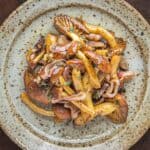
Erica
i only cooked for 10 minutes and really had severe abdominal cramping and GI Distress the next day - I had no idea that would happen - so just be aware. Do not undercook these!
Alan Bergo
Sorry you had some issues. These are a widely sold mushroom so if it was your first time eating them I’d suspect you might be intolerant to them.my friends at R&R cultivation in MN grow hundreds of pounds a week to sell at our local coops and this is the first I’ve heard of GI issues with them. It can happen with any mushroom though if the individual is sensitive to the species in question.
Rachel Scott
I bought a variety of three species of mushrooms, including these; the others were lions mane and oyster mushrooms; the NYT recipe I followed, called for cooking these with onions, garlic and herbs in olive oil, then adding to chicken; the dish was then baked for 40 minutes. It was delicious, but I have had some kind of near-fainting episodes afterwards, with light exertion, for three days in a row, while continuing to eating left-overs. Now wondering whether the mushroom, or mushrooms—were a contributing or cause of my synonyms, which I’ve not previously experienced. This is anecdotal, of course, and could be entirely unrelated.
Alan Bergo
Hi Rachel, thanks for commenting. As more boutique varieties of mushrooms come on the market we will see more instances of previously unknown mushroom intolerances. Every species is a little different and it’s likely you won’t be able to eat these. Many people are sensitive to certain species but can eat others without issue.
LaRae
The best!
JKueger
The roasted recipe turned out SO GOOD!! Thank you!
AJ
Grabbed some from the farmeres market here in WV. The salad was really good. Have you ever grown these? I'd like to.
Josie
Loved the salad Alan! We used it with brick caps this year too after we tried it with chestnuts we grew. Hi from Northern FL!
Susan Kay
I've been fruiting more Chesties than I want.....due to mislabling one of my lionsmane liquid culture jars about 3 months ago...oops! Wow, you've got a winner with this recipie. I did not use the shallot, or any onion, and the Chestnuts were excellent!
Alan Bergo
Hey Susan. Glad it worked for you. Such a fun mushroom.
The Clean Veganista
I found these mushrooms yesterday @ Love Whole Foods in Ormond Beach & had to try them because they’re so pretty. I just made a modified version of your recipe and it turned out great. Thank you so much!!
Alan Bergo
Thanks Lori.
Pixie
It does! My curiosity has been further increased. I'll happily check out your recipe. Thanks so much!
Kim
I absolutely love this post! The detail, thoughts and recipe are great. Got a new fan. Thank you 🙏🏻
Alan Bergo
Thanks Kim
Will K.
I just recently learned about these after having had them on a frozen pizza imported from, of all places, Germany. I really liked the texture.
Donna Winter
I'm growing golden oysters right now but am inspired to give these a try. I've been looking into pickling mushrooms and I think I've found my first specimen to experiment on! Thanks!
Alan Bergo
Yes I found these easy to grow. I'd like to set up a monotub to get a larger harvest. A great mushroom.
Pixie
Still new to mushroom foraging, I enjoy preparing my wild finds in simple, basic ways in order to acquaint myself with, and fully enjoy, their unique flavors and textures. Rather than using mushrooms to enhance a dish, they ARE the dish. I like them sauteed in butter and served in light cream on egg noodles, with rice, on toast, on a simple pizza, on a salad of mixed greens, as a side dish with beef, chicken or eggs, and as a delicate sandwich on a soft, warm brioche-style hamburger bun (yum). I would think that pickling them would result in a predominantly vinegar taste, masking the inherent mushroom flavor. So...what is the appeal? An interesting option for pickle lovers? Texture? An alternative method of preserving an abundant harvest? A way to preserve nutrients? I'm curious...please educate me!
Alan Bergo
Hi Pixie. So, pickled mushrooms are one of the oldest methods of preservation, and, along with freeze drying, is one of the best ways to preserve the texture of fresh mushrooms. That said, you're not wrong being skeptical of them having a strong vinegar taste-most of the recipes online seem to want to kill the mushrooms with vinegar. This is why all of the pickle recipes on this site use less vinegar than most others. I also use rice wine vinegar exclusively as it's less aggressive than others.
The amount of vinegar you need to have a safe pH is much lower than most people assume. I did work testing different liquids with a pH meter at one restaurant I worked at where we sold products to the public, and that is where I developed the wild mushroom conserve (pickled mushrooms) that is so popular on this site.
As far as how people use them, I encourage people to think out of the box. I rarely, if ever serve pickled mushrooms cold. They're great as a soup garnish. At my first restaurant I made about 50-80 pounds of pickled mushrooms a week and a warm ramekin of them went out with every steak.
Hope that helps.
Kelly Hebert
I’ve long wondered about the same thing, so, thankful for the question and answer both.
Brian Bergman
Thank you for sharing a new species of edible mushroom with the foodie foraging community. Excellent report and article. Looking forward to trying the chestnut mushroom.
Alan Bergo
Thanks Brian, they're a lot of fun.
Isabella Roversi
This was absolutely fantastic! The blackened shallots with balsamic are absolutely key. I doubled the recipe and I was glad I did.
I'll be growing more chestnuts "just" for this recipe. 10 stars.
We need a fungi book Alan! :))
Alan Bergo
Thanks Isabella!